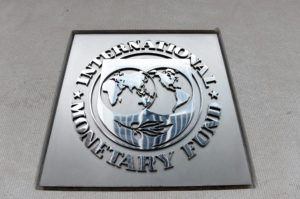
The International Monetary Fund (IMF) has cut its 2021 GDP growth projection to 5.4 percent from 6.9 percent citing the slow recovering economy which was still in various stages of lockdown. The IMF however raised its 2022 GDP growth forecast to seven percent from its previous 6.5 percent estimate that it reported in its World Economic Outlook (WEO) report last April.
In an online briefing Wednesday, IMF Mission Head, Thomas Helbling, said the adjustment to the 2022 growth projection has a “mechanical elemen.” “We reduced our growth forecast for this year. Some of the strong rebound that we expected to be earlier in our previous forecast has just been delayed so there will be still a relatively strong growth rebound. If the economy starts from a lower base, that then will lead to higher growth,” Helbling told reporters. He noted signs of recovery which gradually began in the third quarter of 2020. This slow recovery should gain momentum with the continued easing of quarantine measures, progress in vaccinations, and macroeconomic policy support. “The rebound is expected to strengthen in the second half of 2021 and in 2022,” he added. Last year, the first pandemic year, Philippine GDP contracted by 9.5 percent. As of end-March 2021, the economy is still in recession, it shank by 4.6 percent.
Helbling also said they now expect growth activity to pick up and growth to strengthen more broadly. “The economy will reopen further, more businesses will increase activity. There will be more investments including from the government side (and) then you will have the multplier effects.” IMF officials also said the Monetary Board of the Bangko Sentral ng Pilipinas (BSP) should keep policy rates low in support of growth and for “the recovery to take hold.”
“The current macroeconomic policy settings are appropriate (and) monetary policy should remain accommodative,” said Helbling. He added that the present monetary policy setting continue to be appropriate. The current inflation pressure while temporary in nature is likely to “taper off in the second half of the year” and should be closely monitored, said the IMF official.
For this year, the IMF expects the domestic average inflation to breach the government’s two-four percent target at 4.2 percent. This was a higher inflation forecast than its 3.4 percent estimate last April. For 2022, the IMF inflation projection remains at three percent. The IMF recommends stronger monitoring of financial sector risks, to accelerate structural reforms, spend more for the infrastructure investment program, and rebuild policy buffers over the medium term.
During the briefing, with IMF Resident Representative Yongzheng Yang, Helbling said that the uncertainty in the pace of the country’s economic recovery however “is high” with the “balance of risks to economic activity tilted toward the downside.” Helbling noted that the risk of virus resurgence after the second wave last March, which forced the government to again place major economic centers such as the National Capital Region into stricter lockdown for more than 10 weeks, could come from supply constraints, which will “amplify the effect of external shocks, such as rising global interest rates and inflation, that would constrain the monetary policy response and raise financing costs for the public and private sector.”
Helbling said that to accelerate growth and recovery, the public and private sector should have a “reinvigorated infrastructure push” and take advantage of a rebound that will come in the second half of the year.
“Timely implementation of fiscal support—with flexibility to address evolving priorities—is crucial for continued recovery,” said Helbling. “The fiscal deficit targeted in the 2021 budget provides significant stimulus to economic activity, but given the imperative to beat the virus and the continued difficulties faced by vulnerable families and businesses, more resources could be needed.” He said “such resources should aim to bolster the healthcare system to accelerate vaccinations, strengthen capacity for testing, tracing, isolation, and treatment, and support affected families and businesses. A medium-term fiscal strategy should underpin the eventual rebuilding of fiscal space.”
In the meantime, the IMF said liquidity and capital in the financial sector is still strong and this is crucial in ensuring financial stability and to revive credit growth for a stronger recovery. “Liquidity and capital in the banking system have remained strong, as banks have benefitted from past reforms and policy support at the onset of the pandemic. However, the full impact of the pandemic is yet to manifest itself, and continued vigilance is needed to safeguard financial stability,” said Helbling.
The expansion of macroprudential toolkit is required here, he added, to “help enhance the resilience of the financial system.” To expand bank credit especially to small enterprises, the quick implementation of new laws passed such as the Financial Institution Strategic Transfer or FIST Act and the Government Financial Institutions Unified Initiatives to Distressed Enterprises for Economic Recovery or the GUIDE Act will help.
The IMF conducted its virtual discussions on the Philippine economy during its Article IV Consultation with government officials, from May 21 to June 11. The results of these discussions which is IMF’s surveillance of a member-country’s financial and economic developments, are reported to the IMF management and then to its executive board which will make formal recommendations to the member-country.
Source: mb.com.ph

תגובות